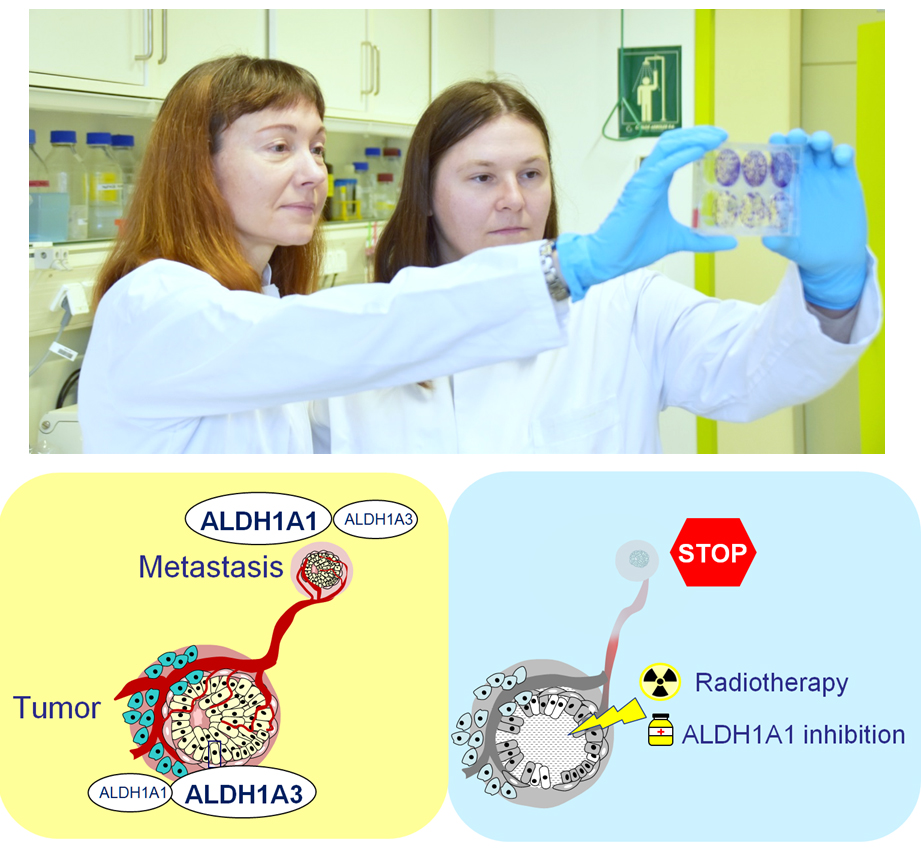Prostate cancer is the most common type of cancer diagnosed in men. When prostate cancer is diagnosed at the localized stage, the chances of cure are high. The bones are a common site of prostate cancer metastasis, and bone metastatic disease is associated with high mortality and morbidity. As for now, no biomarkers are available in clinics to predict prostate skeleton metastases, and therapeutic options for metastatic prostate cancer are very limited. A population of cancer stem cells (CSC) is responsible for tumor growth and metastatic dissemination, and CSC-related signaling mechanisms can be used as biomarkers and therapeutic targets. The recently published study by Gorodetska et al. provides the first evidence that ALDH1A1-driven signaling pathways could be biomarkers to predict metastatic spread and resistance to radiotherapy in patients with prostate cancer and promising targets to prevent tumor dissemination.

This study is the result of a great collaboration between µBONE researchers Anna Dubrovska, Mechthild Krause, and Annett Linge and the teams of Tobias Lange, Ben Wielockx, Franziska Knopf, and Sven Perner.
The link for the publication: https://www.thno.org/v14p0714
Gorodetska I, Offermann A, Püschel J, Lukiyanchuk V, Gaete D, Kurzyukova A, Freytag V, Haider MT, Fjeldbo CS, Di Gaetano S, Schwarz FM, Patil S, Borkowetz A, Erb HHH, Baniahmad A, Mircetic J, Lyng H, Löck S, Linge A, Lange T, Knopf F, Wielockx B, Krause M, Perner S, Dubrovska A. Theranostics. 2024 Jan 1;14(2):714-737. doi: 10.7150/thno.88057. eCollection 2024. ALDH1A1 drives prostate cancer metastases and radioresistance by interplay with AR- and RAR-dependent transcription.



